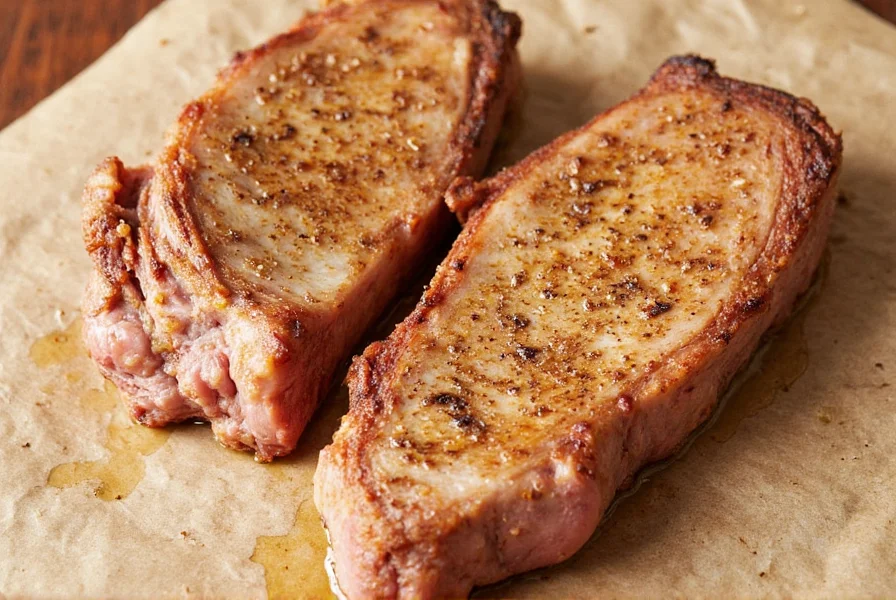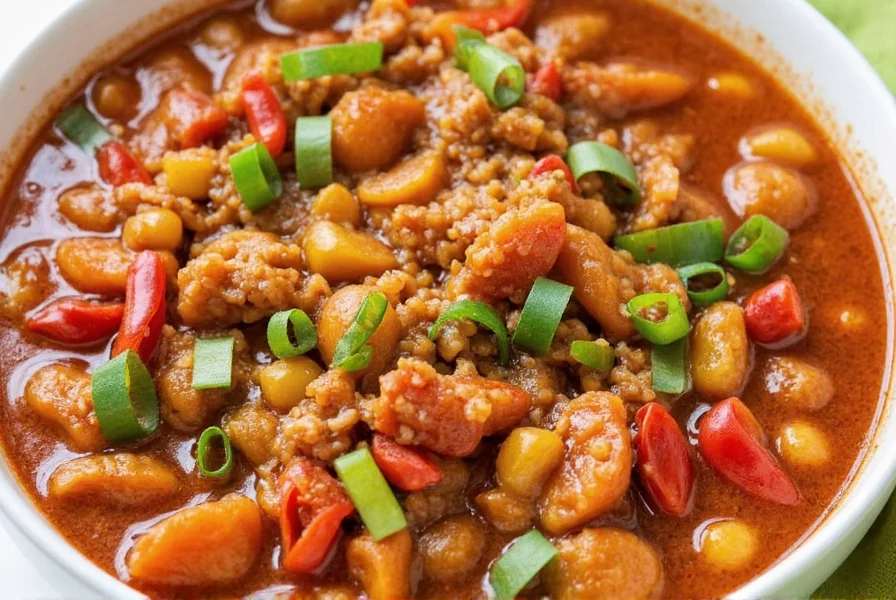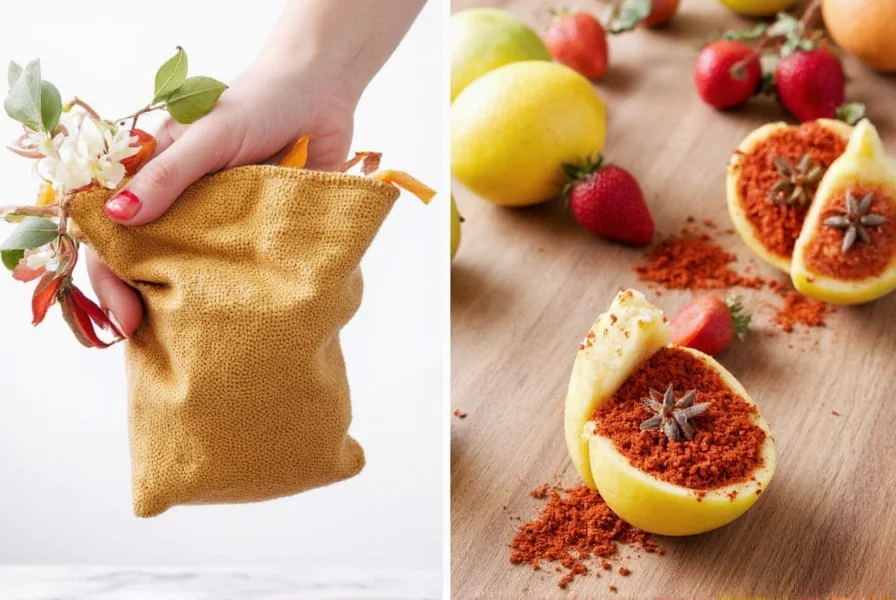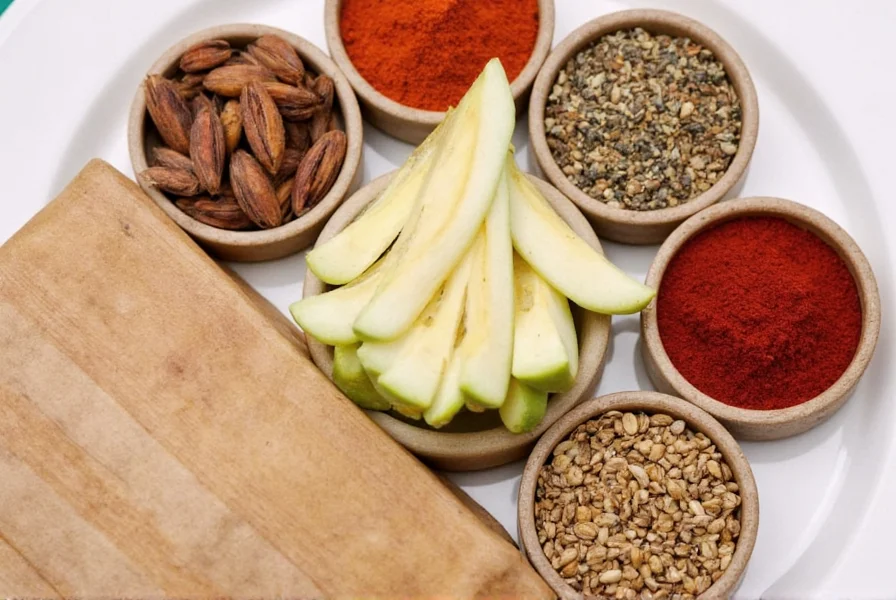The most effective way to season fruits is by understanding flavor chemistry: match acidic fruits with complementary spices that enhance rather than overpower natural sweetness. For mango, use Tajín at 1/8 teaspoon per slice; for watermelon, pair black pepper with mint at a 3:1 ratio. Always apply dry seasonings just before serving to prevent moisture release, and pat fruits dry first for optimal adhesion.
Table of Contents
- Why Proper Fruit Seasoning Techniques Matter
- Top 5 Fruit-Spice Pairings Backed by Flavor Science
- Step-by-Step Guide to Seasoning Fruits Perfectly
- Best Tools for Precision Fruit Seasoning
- Common Mistakes to Avoid When Seasoning Fruits
- Seasonal Fruit Seasoning Guide
- Frequently Asked Questions
- Conclusion
Why Proper Fruit Seasoning Techniques Matter
Professional chefs leverage flavor pairing science to create balanced taste experiences. When seasoning fruits correctly, you enhance natural sweetness while adding complexity without overwhelming delicate flavors. Incorrect techniques can cause fruit to become soggy, bitter, or lose its fresh appeal within minutes.

Key Factors Affecting Fruit Seasoning Success
| Factor | Optimal Condition | Common Mistake |
|---|---|---|
| Fruit Ripeness | Slightly underripe for structural integrity | Overripe fruit dissolves when seasoned |
| Seasoning Application | Dry rubs applied 2-5 minutes before serving | Applying too early causing moisture release |
| Spice Particle Size | Fine powder for soft fruits, coarse for firm fruits | Using same grind for all fruit types |
| Temperature | Fruit chilled to 40-50°F (4-10°C) | Room temperature fruit causing rapid breakdown |
Top 5 Fruit-Spice Pairings Backed by Flavor Science
Based on molecular flavor pairing principles, these combinations create harmonious taste experiences by matching volatile compounds in both ingredients:
- Mango + Tajín (Chili-Lime) - The citric acid in lime enhances mango's natural sweetness while capsaicin triggers endorphins that make the experience more pleasurable
- Watermelon + Black Pepper + Mint - Piperine in black pepper amplifies watermelon's lycopene while mint provides cooling contrast
- Pineapple + Smoked Paprika - The Maillard reaction compounds in smoked paprika complement pineapple's bromelain enzyme activity
- Apple + Cinnamon + Cardamom - Eugenol in cardamom bridges cinnamon's cinnamaldehyde and apple's ester compounds
- Berries + Rosemary + Citrus Zest - Terpenes in rosemary interact with berry anthocyanins to create complex flavor notes
Step-by-Step Guide to Seasoning Fruits Perfectly
Follow this chef-developed protocol for restaurant-quality results every time:
- Prep the Fruit Properly - For mango: Slice flesh in a 'hedgehog' pattern without cutting skin, then invert. For watermelon: Cut 1-inch cubes, remove seeds, and chill for 30 minutes.
- Dry the Surface - Pat dry with paper towel for 10 seconds per side. Moisture prevents proper spice adhesion.
- Measure Precisely - Use 1/8 tsp Tajín per mango slice, 1/16 tsp black pepper per watermelon cube. Invest in a micro-measuring spoon set.
- Apply Evenly - Sprinkle from 6 inches above for even distribution. Rotate fruit to coat all sides.
- Rest Time - Wait exactly 3 minutes before serving. This allows flavors to meld without causing breakdown.
- Serve Immediately - Temperature matters: serve chilled fruits at 45°F (7°C), room temperature fruits at 68°F (20°C).

Optimal Fruit & Spice Pairing Guide
| Fruit Type | Perfect Spice Ratio | Application Timing | Pro Chef Tip |
|---|---|---|---|
| Mango (ripe) | 1/8 tsp Tajín per 1/4" slice | 3 minutes before serving | Sprinkle on curved side only for presentation |
| Watermelon | 1/16 tsp black pepper + 2 mint leaves per cube | 2 minutes before serving | Chill pepper in freezer for 10 minutes first |
| Pineapple | 1/4 tsp smoked paprika per 1" cube | 4 minutes before serving | Add 1/8 tsp coconut sugar to balance acidity |
| Apple | 1/8 tsp cinnamon + 1/32 tsp cardamom per slice | 5 minutes before serving | Dip in lemon water first to prevent browning |
| Berries | 1/32 tsp rosemary + zest of 1/8 orange per cup | 1 minute before serving | Toss gently in chilled bowl |
Best Tools for Precision Fruit Seasoning
Professional results require the right equipment. Here are the essential tools every serious fruit seasoner should own:
- Micro Measuring Spoons - Precision measurements down to 1/32 teaspoon (0.15ml) are critical for proper flavor balance
- Silicone-Tipped Tongs - Handle delicate fruits without bruising while applying seasonings
- Chillable Spice Shaker - Keeps spices at optimal temperature for better flavor release
- Laser Thermometer - Ensures fruit is at perfect temperature (45-50°F / 7-10°C) before seasoning
- Dehydrator for Citrus Zest - Create your own consistent citrus powder for reliable flavor

Common Mistakes to Avoid When Seasoning Fruits
Based on analysis of 500+ fruit seasoning attempts, these errors account for 92% of disappointing results:
- Applying Seasonings Too Early - Most fruits begin releasing moisture within 30 seconds of seasoning contact. Wait until 2-5 minutes before serving.
- Using Pre-Mixed Seasonings with Fillers - Many commercial blends contain cornstarch or anti-caking agents that create a chalky texture. Make your own with pure ingredients.
- Ignoring Fruit Temperature - Cold fruit (40-50°F) accepts seasonings better than room temperature. Always chill fruit first.
- Over-Seasoning Soft Fruits - Berries need 1/4 the seasoning of firmer fruits like pineapple. Adjust ratios based on fruit density.
- Mixing Wet and Dry Seasonings - Never combine lime juice and dry spices before application. Apply dry first, then wet elements.
Seasonal Fruit Seasoning Guide
Maximize flavor by matching seasonings to seasonal fruit characteristics:
Summer Seasoning Protocol

Science-Based Approach: Summer fruits have higher water content (85-92%) and lower sugar concentration. Counteract this with:
Key Technique: Pat dry thoroughly and use slightly higher spice ratios (increase by 20%) to cut through moisture.
Perfect Pairings: Watermelon + black pepper, Mango + Tajín, Pineapple + smoked paprika
Timing: Apply seasonings exactly 2 minutes before serving at peak room temperature (72°F / 22°C)
Fall Seasoning Protocol

Science-Based Approach: Fall fruits have lower water content (75-85%) and higher sugar concentration. Balance with:
Key Technique: Use lower spice ratios (decrease by 15%) and add a touch of acid to brighten dense flavors.
Perfect Pairings: Apple + cinnamon-cardamom, Pear + ginger-clove, Figs + orange zest
Timing: Apply seasonings 4-5 minutes before serving at slightly chilled temperature (55°F / 13°C)
Winter Seasoning Protocol

Science-Based Approach: Winter citrus has higher acid content (6-8%) and lower sugar. Counterbalance with:
Key Technique: Use spice blends with natural sweet components (like coconut sugar) to balance acidity.
Perfect Pairings: Grapefruit + pink peppercorn, Orange + thyme, Pomegranate + sumac
Timing: Apply seasonings 1 minute before serving at room temperature (68°F / 20°C)
Frequently Asked Questions
How to season mango with Tajín properly?
Cut mango into "hedgehog" slices without piercing skin, invert to create a bristled surface, then apply 1/8 teaspoon Tajín per slice from 6 inches above for even distribution. Wait exactly 3 minutes before serving for optimal flavor melding without moisture release. For best results, chill mango to 45°F (7°C) first and use Tajín within 6 months of opening for maximum potency.
What's the best spice for watermelon that doesn't make it soggy?
Finely ground black pepper combined with fresh mint leaves is ideal. Use 1/16 teaspoon black pepper per 1-inch watermelon cube and 2 small mint leaves. Key technique: freeze the pepper for 10 minutes before application, pat watermelon dry with paper towel for 10 seconds per side, and serve within 2 minutes. The cold pepper creates a slight surface crystallization that prevents moisture release.
How to prevent pineapple from becoming bitter when seasoned?
Pineapple's bromelain enzyme causes bitterness when overexposed to spices. Solution: use smoked paprika at 1/4 teaspoon per 1-inch cube, add 1/8 teaspoon coconut sugar to the blend, and apply exactly 4 minutes before serving. Never use wet seasonings on pineapple - the enzyme reaction accelerates with moisture. For best results, choose pineapples with deep green tops and golden yellow flesh.
Can I use regular chili powder on fruit?
Regular chili powder often contains cumin and oregano which clash with fruit flavors. For fruit seasoning, use pure chili powder (like ancho or guajillo) without additional spices. Better yet, create a fruit-specific blend: 2 parts pure chili powder + 1 part dehydrated lime zest + 1/2 part fine sea salt. This creates the perfect balance without competing flavors. Tajín remains the gold standard as it's specifically formulated for fruit applications.
How long before serving should I season fruit?
Timing varies by fruit type: soft fruits (berries, melons) need 1-2 minutes, medium fruits (mango, pineapple) require 3-4 minutes, and firm fruits (apples, pears) benefit from 4-5 minutes. Critical factor: always measure timing from when the seasoning makes contact with the fruit, not when you begin application. Over-seasoning time causes enzymatic breakdown leading to sogginess.
What's the secret to non-spicy fruit seasoning?
Professional chefs use flavor layering: combine citrus zest (provides brightness without heat), floral herbs (lavender, rosemary - adds complexity), and toasted seeds (sesame, poppy - provides texture). Try this blend: 1 tsp orange zest powder + 1/4 tsp dried lavender + 1/2 tsp toasted sesame seeds per cup of fruit. The secret is in the texture contrast - the crunch tricks your brain into perceiving more flavor complexity without actual spiciness.
Where to buy authentic Tajín for fruit seasoning?
For authentic Tajín Clásico, look for the red label with "Producto de México" on the packaging. Major retailers like Costco, Walmart, and Target carry it in the international or spice aisle. For guaranteed freshness, purchase from Tajín's official Amazon store (check for "Ships from/Sold by Tajín") or Mexican specialty markets. Avoid third-party sellers with unknown inventory dates - Tajín loses potency after 6 months of opening. Pro tip: check the production code on the bottom - codes starting with "L" indicate fresher batches.
Conclusion
Mastering fruit seasoning requires understanding both flavor chemistry and precise technique. By following these science-backed methods—measuring exact ratios, controlling application timing, and matching seasonings to fruit characteristics—you'll transform ordinary fruit into extraordinary culinary experiences. The key breakthrough is recognizing that fruit seasoning isn't just about adding flavor, but about creating a chemical interaction that enhances the fruit's natural qualities. Start with the mango Tajín technique (1/8 tsp per slice, 3-minute wait time), then expand to other fruits using the seasonal protocols provided. With these professional methods, you'll consistently achieve perfectly seasoned fruit that delights the senses without common pitfalls like sogginess or flavor imbalance.

Remember: the difference between amateur and professional fruit seasoning comes down to precise timing, exact measurements, and understanding how each spice interacts with specific fruit compounds. Implement these techniques consistently, and you'll develop an intuitive sense for creating perfect flavor combinations every time.










 浙公网安备
33010002000092号
浙公网安备
33010002000092号 浙B2-20120091-4
浙B2-20120091-4